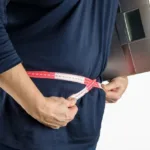A recent study published in the journal Stroke has linked extreme heat and extreme cold with a high risk of dying from stroke.
The researchers behind this study belonged to the Harvard T.H. Chan School of Public Health, and they looked at data on stroke-related deaths from 522 cities across 25 countries. So, their findings have suggested that extreme weather can be fatal.
The study focused on two main types of strokes:
- Ischemic stroke and
- Hemorrhagic stroke.
Their results were surprising: for every 1000 stroke-related deaths, about 11 happened on days with very high or low temperatures.
Breaking down the numbers
This analysis revealed a stronger link between stroke deaths and extreme cold weather.
What this means is that the coldest 2.5% of days were linked to 9.1 additional deaths for every 1000 ischemic stroke deaths.
When this was compared to the extremely hot weather, only 2.2 more deaths were caused on the hottest days per 1000 ischemic strokes.
A similar pattern was seen for hemorrhagic strokes. In this case, 11.2 more deaths per 1000 hemorrhagic deaths happened on the coldest days, while only 0.7 deaths were seen on the hottest days.
Therefore, this study has emphasized that strokes can cause death, especially during extremely hot and cold days.
| Read: |
Low-income countries at higher risk
An unfortunate factor was also identified in this research. Low-income countries appeared to bear a greater burden of heat-related hemorrhagic stroke deaths compared to high-income countries.
This reveals the role of both social and economic factors behind the prevalence of stroke-related deaths in extreme weather.
Underpaid civilians do not have the resources to access air conditioning and proper hydration, both of which are prominent risk factors for heat strokes.
Climate Change and Stroke
The lead author of the study, Dr. Barrak Alahmad, pressed on the significance of the results while relating it to climate change:
“Our findings are another step toward understanding the effects of climate change on stroke”.
He also mentioned in a press release that
“As temperatures become more extreme, we foresee an increase in fatal strokes and a widening disparity in stroke mortality between high- and low-income countries, as the latter are likely to bear the brunt of climate change.”
Public health measures can help …
The study shows the need for public health policies and measures to lower the dangers of extreme weather.
On hot days, people should be warned about the heat spikes and advised to drink plenty of water and keep their homes cool.
Similarly, in cold weather, people should have access to heating pads and shelters.
| Read: |
Individual actions matter too
Some further measures can be taken to make sure that people are protected during extreme weather conditions.
Hot weathers | Cold weathers |
| Staying hydrated | Proper heating |
| Wear appropriate clothes | Dress warmly |
| Limit strenuous activity | Avoid going outside during harsh winters |
| Read: |
Difference Between Ischemic and Hemorrhagic Stroke:
About 80% of the patients with stroke have blocked arteries in their brains. This is called ischemic stroke.
Hemorrhagic stroke is blood oozing out of the blood vessels into the brain. Although not very common, hemorrhagic stroke is associated with a worse prognosis.
Here are some differences between ischemic and hemorrhagic strokes:
Feature | Ischemic Stroke | Hemorrhagic Stroke |
Cause | Blood vessel blockage | Blood vessel rupture |
Impact on brain | Lack of oxygen and nutrients | Bleeding and pressure |
Symptoms | Weakness, numbness, speech issues | Sudden severe headache, similar to ischemic stroke |
Risk Factors | High blood pressure, high cholesterol, diabetes, smoking | High blood pressure, weakened blood vessels, aneurysms |
| Read: |
Treatment of Ischemic Stroke:
Clinical studies have focused on two main approaches for treating ischemic strokes, with timing being the most important factor for maximizing effectiveness.
1. Reopening the blocked vessel:
Thrombolytic Medication (Alteplase):
This is considered to be a gold standard treatment for ischemic stroke. It is only effective if administered within a time window (3 to 4.5 hrs) after the start of the stroke [ref].
To minimize harm, altepalase dissolves the blood clot and restores blood flow to the brain [ref].
However, it must be remembered that this option has a risk of bleeding, so patients must be selected after careful consideration.
Endovascular thrombectomy (EVT):
This is a slightly invasive method and involves the insertion of a tube through a groin artery and then guiding it to the blocked brain vessel.
After that, a ‘stent-retriever’ device is used to remove the clot. Unlike Alteplase, this procedure has a larger time window, going up to 24 hrs in some cases. It is also effective against large vessel occlusions [ref].
2. Supportive Care:
Right after a stroke episode, the first thing that should be done is limiting the damage and promoting recovery as soon as possible.
Blood pressure and blood sugar control:
one must maintain an ideal blood pressure and serum glucose levels to avoid any extra issues.
Oxygen therapy:
If oxygen levels are low, then try to increase them, as this can help improve brain function.
Rehabilitation:
Physical, occupational, and speech therapy can all be significant in helping patients work properly and function after a stroke.



